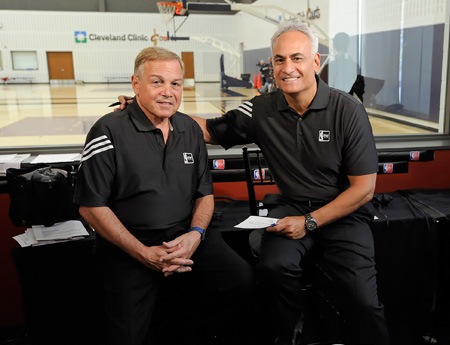Networks Learning to Program Social Media

Related: New Facebook Tools Meld TV and Social Media
Social media is a proven tool in programmers’ toolbox. But the tactic of using social media to drive viewers to live TV programming has taken a great leap forward in recent months as a growing list of programmers have premiered full episodes on Facebook.
The development is relatively new—the first such premieres occurred in the late spring. But recent interviews with a wide range of networks highlight some promising results as well as some emerging best practices for using the platform.
“It is absolutely something we will be considering in the future,” said Jim Marsh, VP, digital and social media at HBO, which put two episodes on the platform this summer. “Ballers has over 5 million views and the The Brink was around 1 million. So that is huge visibility for a show.”
In addition to reaching a large potential audience of viewers—there were some 213 million monthly active Facebook viewers in the U.S. in the second quarter of 2015—network executives also noted that the platform is an ideal way to interact with audiences.
“Facebook is ideally structure to provide a fantastic video viewing experience,” explained Danielle Mullin, VP marketing for ABC Family, which has premiered a number of shows on the platform, including Kevin From Work, in the last few months. “You can be scrolling through your Facebook feed, see that you can watch a sneak peak of Kevin From Work and you can start watching with one click without having to go to a website or download an app.”
The platform also provides immediate feedback in terms of usage data and reactions, added Colleen Mohan, senior VP brand marketing at USA Brand Marketing. “It is a discovery platform because we can discover audience that we didn’t expect,” she said.
The smarter way to stay on top of broadcasting and cable industry. Sign up below
In promoting the series Mr. Robot, for example, USA Network obviously targeted members of the tech community, premiering the hacker drama at the SXSW confab in March. Data from the Facebook premiere, however, also made it clear that “Mr. Robot had a tremendous African-American following that we didn’t expect,” Mohan said. “It is really a very nimble and immediate platform to discover and target audiences.”
HACKING NEW TACTICS
While use of the platform is just beginning, network executives highlighted a number of best practices. “The news feed is a very competitive place to play,” said Marsh. “The messaging…has to explain to someone who is scrolling through the news feed that ‘Hey, stop scrolling for a moment. This is something worth checking out.’”
Involving the talent is another important issue. Starz, for example, debuted Blunt Talk on Patrick Stewart’s Facebook page and the start of the second season of Survivor’s Remorse on LeBron James’ page this past summer.
“LeBron James has 22 million Facebook followers,” who had the opportunity to sample the show, said Alison Hoffman, executive VP of marketing for Starz. “Both of these stars [James and Stewart] shot introductions to the sampled episodes and spoke to their followers about why they were involved and why they hoped they would watch.”
Most networks have made episodes available prior to their broadcast as a way of building buzz and interest around the show. But some like HBO have made episodes available after their debut on linear TV and others like ABC Family have been exploring the airing of episodes on Facebook for existing series. “It’s a way to further build buzz,” said Mullin.
Turner Sports and the NBA recently took those tactics to a new level with the NBA Real Training Camp series. On Oct. 1, a two-hour episode of that series became the first live show to be simulcast on TV, Facebook and the Web.
“I don’t know if we were aware that this would be the first live simulcast on Facebook when we developed the idea,” for the two hour simulcast, said Albert “Scooter” Vertino, general manager of NBA Digital and senior VP of programming at Turner Sports. “We were just looking for the best platform to expose our fans to the content and this was a natural fit.”
